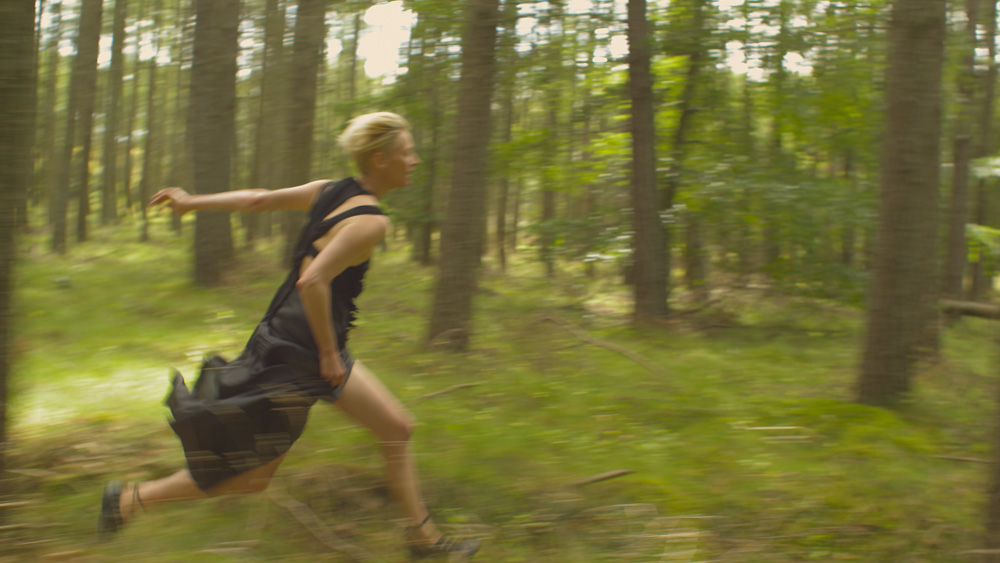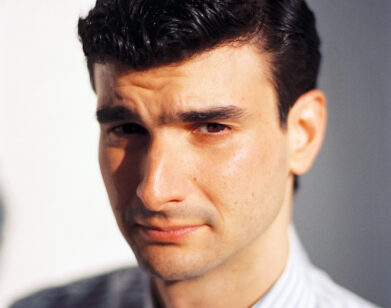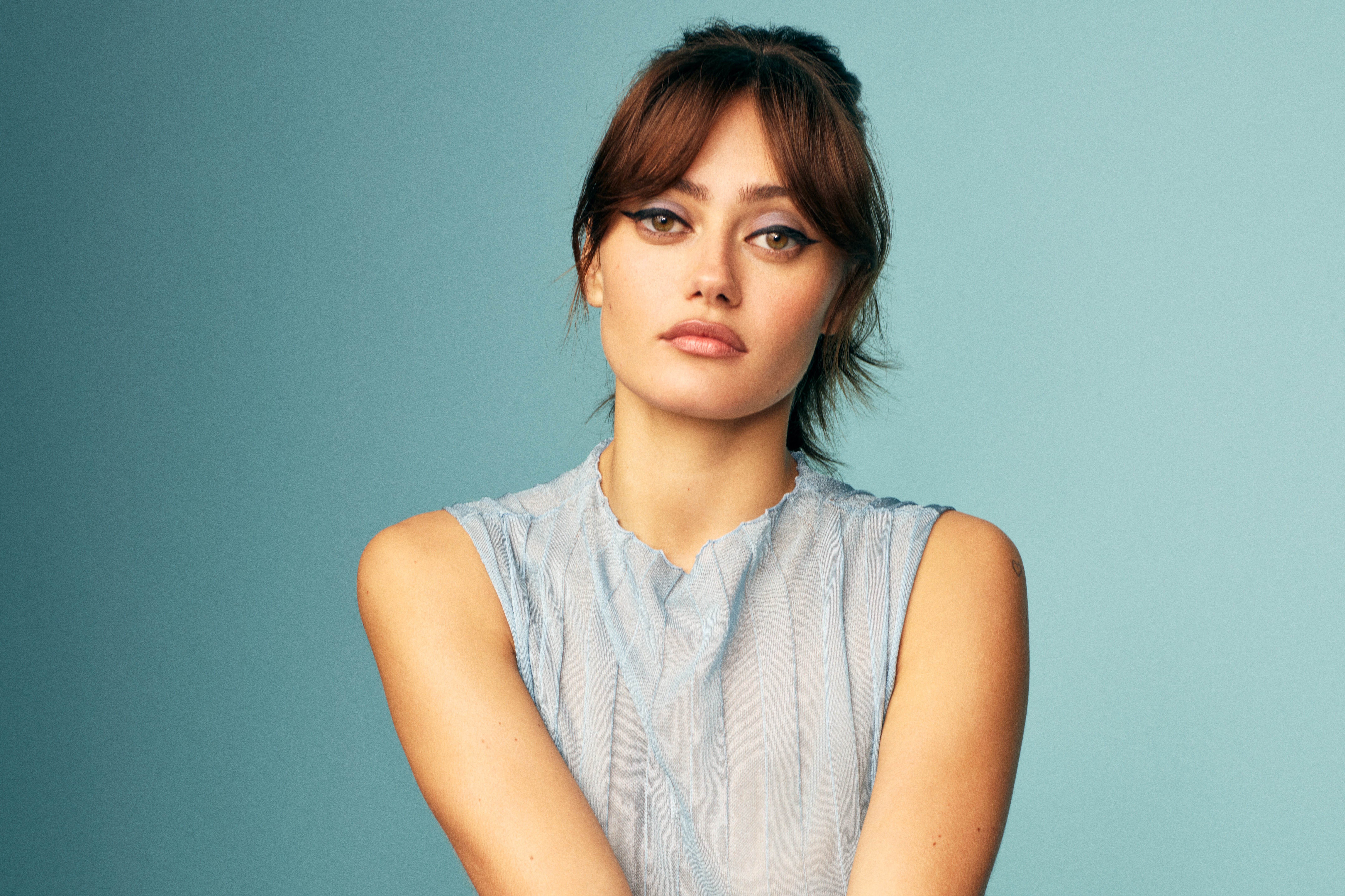See Tilda Run
Last September, while the rest of the art world fixated on the new season of gallery shows, New York photographer Ryan McGinley was in the lush Scottish countryside running through woods and crawling around castles. He wasn’t alone. The luxury brand Pringle of Scotland had brought him over to direct and shoot a short film with actress Tilda Swinton in celebration of its spring 2010 collection under the aegis of creative director Clare Waight Keller. (McGinley also shot the accompanying ad campaign.) The result is a stunning, stormy art film à la Derek Jarman, interspersed with oblique quotes from director Robert Bresson’s Notes on Cinematography. Swinton dashes around trees and climbs through a castle window, all the while dressed in looks from the Pringle collection. We talked to McGinley about working with a mentor-muse like Swinton and why he decided to take his cameras out of New York.
CHRISTOPHER BOLLEN: People familiar with your photography often think you work off-the-cuff, but I know that you are a meticulous organizer. How did you prepare for this short film with Tilda?
RYAN MCGINLEY: Well, I knew it had to be in Scotland for Pringle. And Tilda really wanted to shoot by her house in the Scottish countryside. So those two elements were determined right off the bat.
BOLLEN: Had you been to Scotland before?
MCGINLEY: Yeah, I traveled there once to see Belle & Sebastian and again when I was traveling with Morrissey. So I’ve seen a lot of Scotland. It’s superlush, and it’s possible to get all four seasons in the same day. And the sky is the most dramatic you’ll find anywhere, which makes it perfect for shooting.
BOLLEN: In the film, after Tilda runs through the forest, she climbs into a castle that’s like a cave and comes out onto the beach. The cave reminded me of your more recent photography, where you’ve been traveling around the U.S. shooting models in caves. Was that intentional?
MCGINLEY: It totally relates. I was definitely in that head space of caves because I had just gotten back from shooting caves for three months. So I brought it up with Tilda. Working with her is a collaboration. She wanted to be involved and help and figure out the film with me. There’s a point when you’re working with a celebrity where everyone on set says, “Oh, god, you can’t ask them to do that, crawl through a window.” But Tilda did it. She saw people on set whispering in my ear and came over and said, “Hey, listen. Whatever you want me to do, just ask. Don’t listen to anybody else. It’s just the two of us now, and I’ll go there with you.”
BOLLEN: She doesn’t seem like a typical celebrity. You’d been a fan of hers, right?
MCGINLEY: I think I chose the castle because it reminded me of Derek Jarman. And I first became aware of who Tilda was through Derek Jarman. When I moved to New York and was studying at Parsons, I used to go to Tower Video on East 4th Street and rent every video in the queer section. Of course, the whole thing was filled with Derek Jarman movies. Then I saw Tilda in Sally Potter’s Orlando [1992], which kind of changed my life.
BOLLEN: Well, Tilda is the kind of actress who doesn’t even need to talk on-screen to say everything.
MCGINLEY: In many ways this is a film about silence and the expressive potential of the interior and exterior worlds. Silence has been an important part of Tilda’s acting repertoire—particularly in the Derek Jarman days.
BOLLEN: You’re one of the few young artist–photographers who have moved so seamlessly into advertising work. Do you try to separate those fields? Or do you see no problem in both activities coming together?
MCGINLEY: I really don’t want to be part of just one group, you know? I’m interested in doing everything—making music videos, shooting campaigns, having -gallery and museum shows, making movies. Everyone wants to put you in a box, and I’m afraid I’m not that kind of person.
BOLLEN: What else are you working on now?
MCGINLEY: I’m working on a series of black-and-white nude studio portraits. They are really simple and classic images of nudes on white backgrounds.
BOLLEN: How do you find your models these days?
MCGINLEY: I have a girl who works for me, and her entire job is to travel around music festivals all year long just to find these great rock ’n’ roll kids.
BOLLEN: When we first met, you were still shooting mostly in downtown New York. In fact, I think you’re still known as this downtown-reportage artist. But really your work has been situated explicitly outside the city for a while. Did you do that on purpose?
MCGINLEY: I got a lot of attention when I was really young, and people have it in their minds that I’m still 24 years old. So after I had my Whitney show [in 2003], I made the decision that I had photographed everything I was interested in in New York. New York is a town you have to embrace, but you also need to leave. I may revisit it one day, but for me it’s a place to live rather than one to make work in.
BOLLEN: I remember the speech you gave in London when Pringle premiered the movie at the Saatchi Gallery. You said you and Tilda were related. That you were really close.
MCGINLEY: I said we were brothers from different mothers. [laughs]
BOLLEN: You two should make a feature film together. When are you finally going to make a movie?
MCGINLEY: I feel very ready—like the whole cave project was a test for me. I was so used to running and jumping and falling and participating with the person I was shooting. So the caves were a chance to try a different tactic. The whole point was to slow my roll and really look. Sometimes one photo in the cave would take a whole day to shoot. That’s the same thing with the film. It has prepared me.
Christopher Bollen is Interview’s editor at large.







